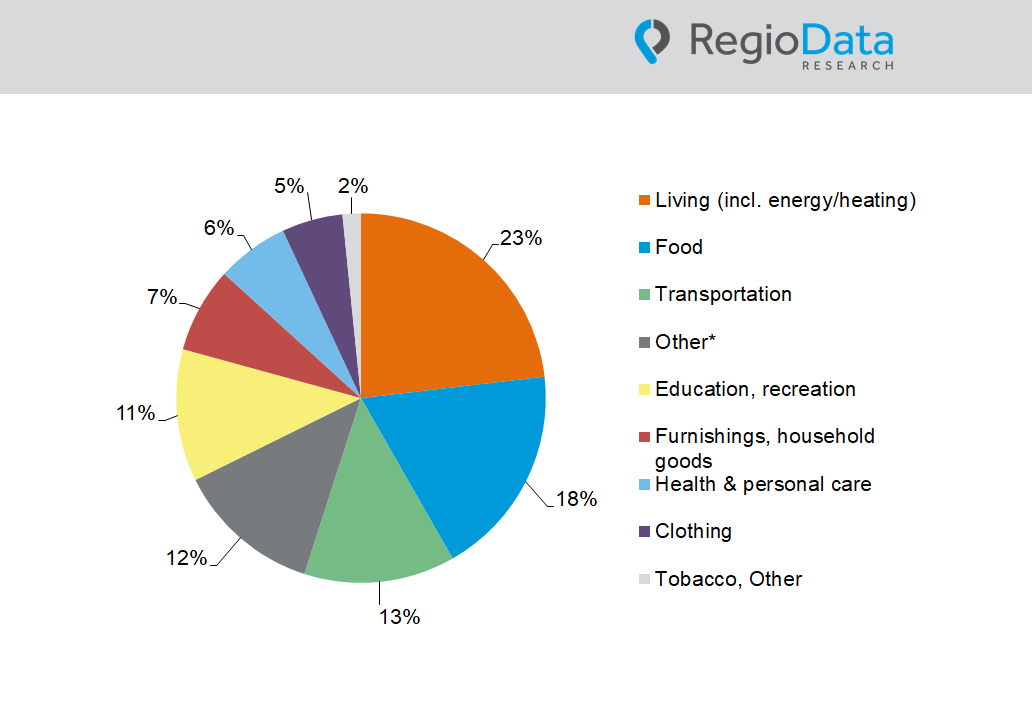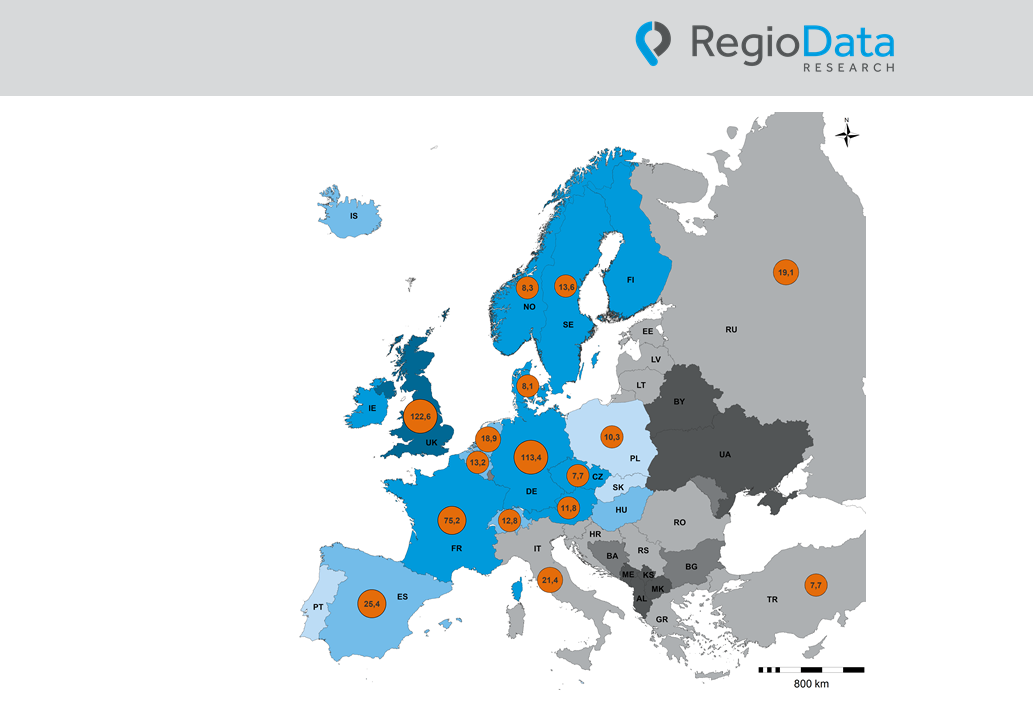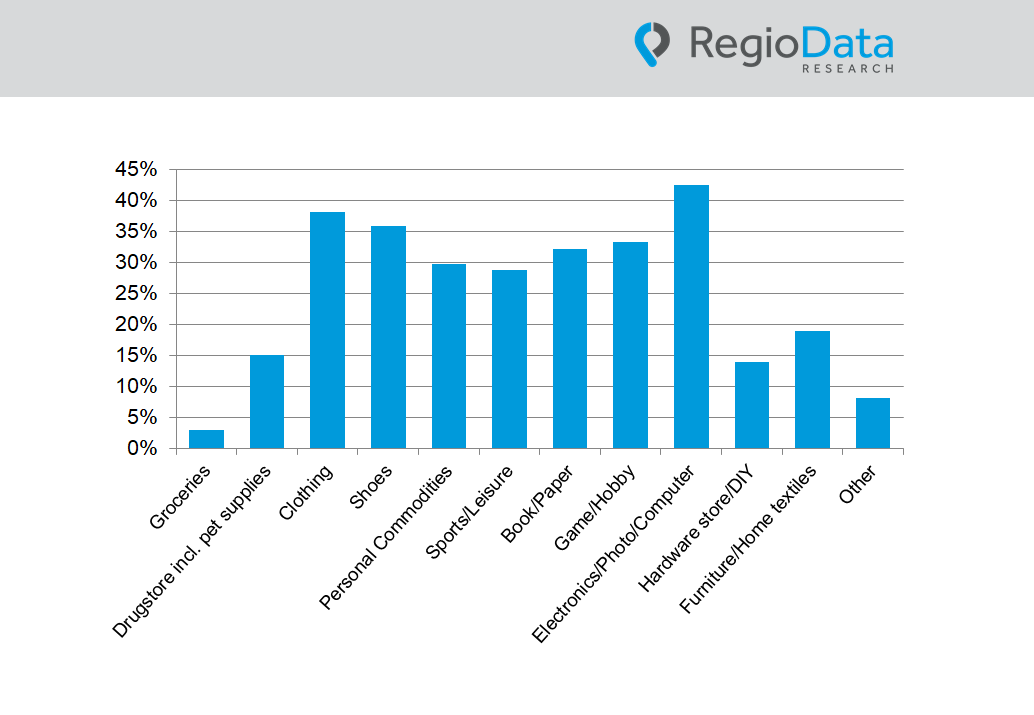austria
Purchasing Power - Austria falls behind Germany in the ranking
RegioData has updated its annual purchasing power study: Austrian purchasing power gains were substantial on average (in nominal terms), but are torpedoed by inflation, even resulting in a slight loss of purchasing power in real terms. However, the outlook is more favorable!
Strong nominal increase in Austrian purchasing power
In 2022, Austrians had an average purchasing power of €25,163 per capita per year. Nominaly, this represents an increase of 8.5% compared to the previous year, the highest in 20 years. However, when considering the annual inflation rate of 8.6% in the past year, inflation erodes all the gains, resulting in a slight negative impact on real purchasing power.
(Purchasing power is defined as the sum of all income sources, including employment income, self-employment income, capital income, rental income, agriculture income, pensions, subsidies, etc. Deducted from this sum are mandatory expenses, such as taxes and social security. Purchasing power refers to the disposable income available.)
European comparison: Germany outpaces Austria
The differences in the development of purchasing power at the international level indicate that the economic situation and consumption opportunities vary significantly across different countries. While a resident of Kosovo has only about €2,400 at their disposal, a Swiss individual has 20 times as much. However, as in previous years, the four countries with the highest purchasing power in Europe remain almost out of reach for the rest: Switzerland, Luxembourg, Iceland, and Norway.
Although Austria was able to maintain its 8th place in the European rankings, this year it fell behind Germany again for the first time. In recent years, Austria has always been just ahead of Germany, but the effects of the Corona pandemic seem to have played a decisive role here. Germany seems to have better managed the challenges of the pandemic and achieved faster economic recovery, resulting in a stronger increase in purchasing power.
Sweden has now slipped from its long-standing position in the midfield to 10th place in the ranking, with an annual per capita purchasing power of approximately €24,000. Thus, an average Swiss individual has almost twice as much financial resource available as an average resident of Sweden.
Lower Austria is number 1, Carinthia remains in last place
The ranking of purchasing power in Austria’s federal states has not changed significantly either. Lower Austria remains the federal state with the highest purchasing power, with an absolute purchasing power of €26,222 per capita per year, benefiting from the “Speckgürtel” around Vienna. The Austrian tourism hotspots, Tyrol and Salzburg, as well as Vienna to a lesser extent, are experiencing the aftereffects of the COVID-19 crisis: The average purchasing power is developing slightly less strongly than expected.
District comparison: Austria’s top 5 districts with the highest purchasing power remain constant
This year, Austria’s five wealthiest districts can once again maintain the same position in the rankings. Vienna I retains the top spot, despite a relative decline compared to the previous year, with a nominal purchasing power averaging €40,407 per resident per year. Wien Hietzing occupies second place with a purchasing power that is around €8,500 lower. The districts with the highest purchasing power are mainly located in Vienna and Lower Austria. In general, all districts show increases in nominal purchasing power.
Of particular interest is Vienna’s unique position, which exhibits extremes in both directions. The capital city is home to both the districts with the highest and the lowest purchasing power in the whole of Austria. Each year, Vienna manages to have three districts placed in the top five in both directions, and this year, even four districts, yet it remains comparatively less affluent than other federal states.
Regarding the five districts with the lowest purchasing power, Hermagor and Lienz have shown relative recovery this year and have been replaced by Zwettl and Vienna XI. The bottom positions are once again occupied by Viennese districts.
Outlook
Gradually decreasing inflation rates, along with higher wage settlements, which are typically based on the previous year’s inflation rate, are expected to lead to slight increases in purchasing power, although in terms of the composition of overall purchasing power, there will be slight changes in income from capital assets (due to rising interest rates) and from agriculture (due to higher producer prices). Overall, for 2023 and 2024, both nominal and real increases in purchasing power are quite realistic.
Share post




